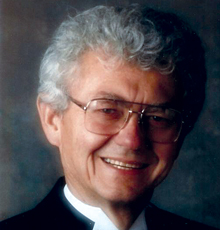
Splashed across my current terrain of life are the inevitable social pronouncements for aging in place — a common writers’ focus. I elongate that definition to include Glacier Hills in Ann Arbor, MI, a senior living community that is my home in my current early winter of life. It’s a place where the sounds of the familiar echo through its relaxing corridors. It’s home; it’s aging in place. It’s an oasis of sanity; it’s the undercurrent of my remarks.
Absent in those corridors and rooms are Stone Age cave-wall carvings. Present are more electronic, hi-tech marvels, providing technological and chronological leaps from hovels to architectural wonders for seniors. Absent are crude drawings of animals and humans. Present are resident paintings, photographs, and collages of seniors in the activities of life.
Winters of life in the past for the elderly varied throughout cultures — mostly uncared for — becoming expendable unless possessing skills such as hunting and finding new sources to meet the human needs for self and others.
I would like to turn to modernity in increasingly superlative surroundings for seniors, mine included. But there’s a core dichotomy question: Can fidelity to accepted ethical and moral norms exist comfortably with a desire for increased servitude to technological advances in senior living centers? Let me look at that dual query.
First, consultants to profit and non-profit entities — a disclaimer: I was one of them — are quietly aware of virtues for seniors while knowing the pragmatic principle of cost’s influence on the bottom line. It is well known that numerous senior facilities and hospitals are founded on moral principles of their religious affiliation. For-profit businesses and in their mission statements quietly nod at moral principles, but senior living facilities that are 501(c)3’s are more serious and beholden to enact those values. That statement suggests that some encrusted leadership moves on the momentum wheels of cost-cutting that in turn affects the lives of workers, or residents.
Top executives may offer their plaintive platitudes with some additional attempts to soften the blow of a job’s disappearance due to technology. There appears to be few minted recipes for comfort on both sides of the decision.
However, both for-profit and non-profit organizations feel the public semantic sting of weakening in-place norms. Take too-often used vitriol in social networks. Unlike the use of robotics, where the robot’s mechanical movements are devoid of verbal communication with its creator as it goes about its pre-programmed task, social networks depend on humans. Providers should remember that seniors especially seek human interrelationships, but within the bounds of civility learned in an earlier time.
Second, efficiency of devices and methods can have a positive effect as a progressive addition to increased human interactions between seniors distant from families, friends, or medical practitioners. But let us not forget the humans who make the technology work. Mechanical efficiency devices can synergize with ideals founded on moral, ethical principles, especially if access is gained to the device by ethical individuals. It is the human staff who garner the results of technology, who scan documents, receive faxes, connect us to virtual reality, look at electronic monitors outside a resident’s room or help us with email on public computers. Staff may be expected to help residents with Facebook or Skype, help open tablets or iPads. Many staff use italic footnotes asking for confidentiality to the privileged information; to my mind that admonition is like writing on the wind. As much as seniors applaud attempts at privacy, our mailboxes are invaded with unwanted missives.
Fortunately, where I live the Glacial (not a pun) barriers are no accident. There is required identification as a guest or staff members accompanying non-employee service staff to the home of a resident. The caregivers who have a close relationship with use reflect how human caregiver intervention demands adherence to accepted norms of privacy.
In 1962 three of my church members met to discuss the idea of a retirement center for our church. Today their seminal ethical principles apply to a senior facility on a 34 acre campus with its mission enlarged for anyone of differing beliefs, color, creeds, nationality, moral authority, or other values. That last statement, especially moral authority, must be the value that joins with technological advancement.
My career included writing and editing mission and goal statements for business firms, with a quiet nod to their success along with including the usual passion for achieving success for the consumer. Compare that generalization with segments of our Glacier Hills affiliation with Trinity Health’s mission, core values, and vision statements:
“Our Mission is to serve older adults with a continuum of lifestyle, care and support alternatives embracing enrichment of the whole person.”
“We honor the sacredness and dignity of every person”
“We will be the most trusted health partner for life”
Thus one of the tasks of gerontology schools, nursing facilities, senior living facilities in an increasing geriatric society must seek ways of linking high-tech inanimate objects with value rituals of seniors. Mission statements are for a time spangles and ruffles, but their intent is often lost in the dust of time. Each caregiver, each executive working with seniors needs a daily mantra: recite, know the ethical and moral terrain on which their institution rests. It is where I comfortably live.
Herb Hildebrandt, Ph.D., Hl.D, is Professor Emeritus at the Ross School of Business and Professor Emeritus Communication (International) Studies at the University of Michigan. He lives at Glacier Hills senior living facility in Ann Arbor, MI.




